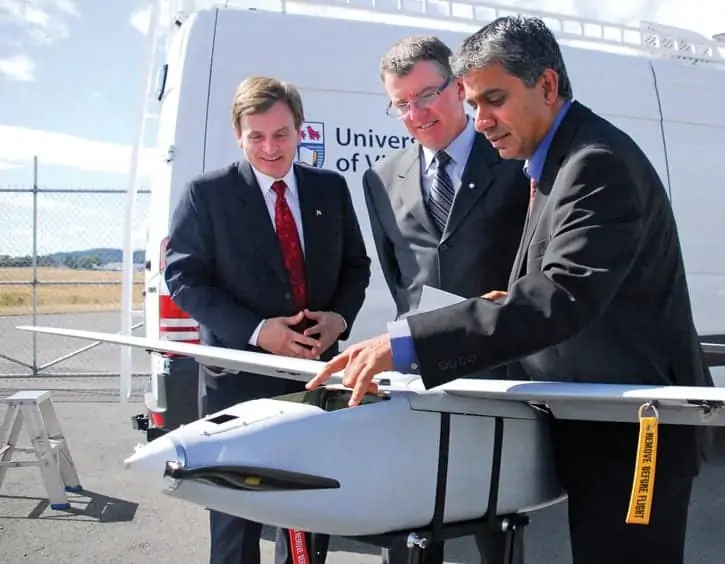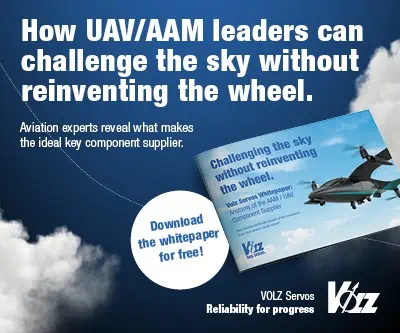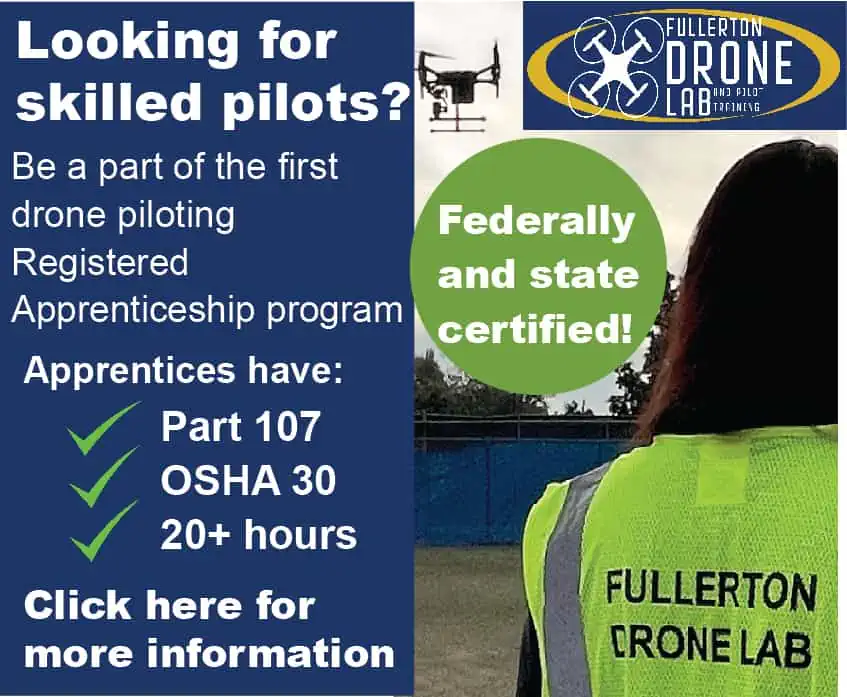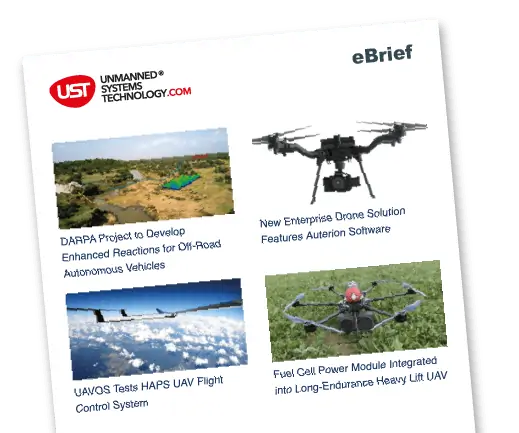Jenner Richards foresees a not-so-distant future where any farmer in Greater Victoria could send an unmanned aircraft into the air – whenever they want – to check on the health of their crops.

North Vancouver MP Andrew Saxton, left, University of Victoria president David Turpin and Afzal Suleman, director of UVic's Centre for Aerospace Research, chat about unmanned air vehicles following a funding announcement aimed at getting UVic's new Aerospace Research program off the ground.
“The special cameras (on the aircraft) can tell you whether it’s getting enough water, whether it’s stressed out, whether it’s healthy; and by looking at that you can optimize where (crops are) worth planting, where it’s not worth planting, where you should harvest first,” says Richards, manager of the University of Victoria’s new Centre for Aerospace Research.
The small centre, located north of the Victoria International Airport, will become a site for students to research and develop unmanned air vehicle (UAV) technology to make it commercially accessible and available to civilians.
“We will be looking at the airplane design, the electronics, avionics, we’re talking about propulsion, payload, how to do the processing of the data. All these things will be part of this program,” says Afzal Suleman, an aerospace engineer and chair of UVic’s Aerospace Centre. “The idea is to create better (UAVs). We’re talking smaller ones, but also (UAVs that have) lighter environmental footprints.”
On Friday, North Vancouver MP Andrew Saxton, on behalf of Western Economic Diversification, announced $671,500 in funding for the centre.
Richards says there’s currently a huge gap in supplies in the UAV sector – there’s little offered between million-dollar military drones and pieced-together hobby shop airplanes.
“We’re trying to fill this huge market in the centre with something that’s cost-effective, still reliable and can be easily operated,” Richards says.
And the potential commercial uses don’t just stop at farmers monitoring crops. UAVs could be used for forest fire patrols, coast guard surveillance, port security, border patrol, avalanche prevention, wildlife preservation and management, and pipeline patrols.
“Over the past decade, unmanned air vehicles and unmanned air systems have shown tremendous commercial potential,” Saxton says.”They can provide a cost-effective solution for tasks that are repetitive, hazardous, or that needs to be performed on short notice.”
UAVs vary in size, with wingspans ranging from 50 centimetres to 3 metres. A UAV can fly for up to 30 hours with a high-resolution camera affixed to the undercarriage, and follows a pre-determined route, directed a nearby mobile control centre.
When the UAVs are at a stage for commercial use, Suleman said clients would rent or lease the aircraft, but they’d gather data and be operated by trained engineers.
Richards says the federal government’s investment will allow UVic to be at the forefront of this embryonic technology. Ultimately the Centre for Aerospace Research intends to produce prototypes for commercial and research purposes and UVic’s Industry Partnerships will help the centre file patents for inventions, and create UAV licensing agreements.
“We are really looking to bring more people in from different areas, … bring all those people together and design products that are tailored to the specific applications, like agriculture monitoring,” he says.
Source: Saanich News


















